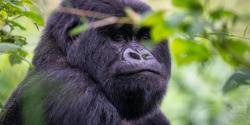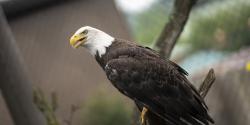Trumpeter swans are dedicated partners who mate for life and remain together year-round. If one member of the pair dies, the survivor will find another mate. Nesting, laying, hatching, and fledging dates vary widely due to weather patterns, sometimes even between years in the same individual sites or regions. Generally, pairs arrive at the breeding grounds in early spring, even before the ice melts. Mates will strengthen their bonds or secure a new mate by performing elaborate courtship displays consisting of simultaneously spreading or raising wings, wing quivering, head bobbing, and trumpeting.
Both parents are involved in nest building and construction can take two to five weeks to complete. Nests are often built on top of muskrat or beaver lodges, floating plant mats, small islands, or on a foundation just above the surface built entirely by the pair out of vegetation. Pairs will often use the same nesting location annually. Each nest is a large mound with a depression in the center, lined with feathers and down. A typical nest can measure up to five feet across and weigh hundreds of pounds! A clutch of one to ten, but more typically four to 6, eggs are laid in the nest. Incubation begins after the last egg is laid. Within four to five weeks, cygnets, or young swans, will hatch.
Cygnets spend their first day or two in the nest, then begin to swim and venture out. They will return to the nest to rest with their parents. The adults will lead cygnets to feeding areas and the young swans can feed themselves. Female trumpeter swans begin to molt at about the time that their chicks hatch out. Females remain flightless for approximately one month, during which time they tend to their chicks. Just as they get their new flight feathers, males begin to molt. Staggered molt cycles ensure that at least one parent remains “grounded” with the chicks until they fledge, which occurs about two months after hatching. After some practice and gaining wing strength, the cygnets fledge (fly) after about three months. In migratory populations, they will remain with their parents through the summer and will migrate with them to the wintering grounds in late fall.
Juvenile swans will migrate with their parents back to summer grounds in the spring, but not cared for by the adults. They remain in sibling groups until they are about two years old and then they begin to seek mates.










